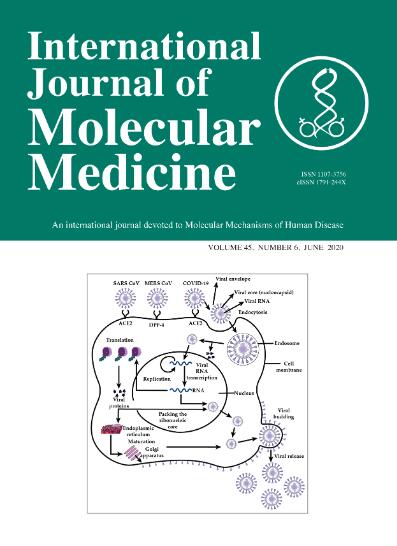针对巨噬细胞适应癌症和动脉粥样硬化异常代谢疗法的新兴纳米材料(综述)。
IF 5.7
3区 医学
Q1 MEDICINE, RESEARCH & EXPERIMENTAL
引用次数: 0
摘要
巨噬细胞作为高度异质性和可塑性的免疫细胞,在促炎(M1)和抗炎(M2)反应中都扮演着关键角色。M1 型巨噬细胞分泌促炎因子以启动和维持炎症,而 M2 型巨噬细胞则促进炎症消退并维持组织稳态。巨噬细胞这些不同的表型转变与细胞代谢的重大改变密切相关,包括糖酵解、磷酸戊糖途径、氧化磷酸化、脂质代谢、氨基酸代谢、三羧酸循环和铁代谢等关键反应途径。这些代谢适应性使巨噬细胞能够调整其活动,以应对不同的疾病微环境。因此,本综述主要侧重于阐明巨噬细胞功能的复杂代谢途径。随后,它全面概述了当前最先进的纳米材料,强调了它们在调节巨噬细胞代谢以有效阻止癌症和动脉粥样硬化疾病进展方面的巨大潜力。本文章由计算机程序翻译,如有差异,请以英文原文为准。
Emerging nanomaterials targeting macrophage adapted to abnormal metabolism in cancer and atherosclerosis therapy (Review).
Macrophages, as highly heterogeneous and plastic immune cells, occupy a pivotal role in both pro‑inflammatory (M1) and anti‑inflammatory (M2) responses. While M1‑type macrophages secrete pro‑inflammatory factors to initiate and sustain inflammation, M2‑type macrophages promote inflammation regression and uphold tissue homeostasis. These distinct phenotypic transitions in macrophages are closely linked to significant alterations in cellular metabolism, encompassing key response pathways such as glycolysis, pentose phosphate pathway, oxidative phosphorylation, lipid metabolism, amino acid metabolism, the tricarboxylic acid cycle and iron metabolism. These metabolic adaptations enable macrophages to adapt their activities in response to varying disease microenvironments. Therefore, the present review focused primarily on elucidating the intricate metabolic pathways that underlie macrophage functionality. Subsequently, it offers a comprehensive overview of the current state‑of‑the‑art nanomaterials, highlighting their promising potential in modulating macrophage metabolism to effectively hinder disease progression in both cancer and atherosclerosis.
求助全文
通过发布文献求助,成功后即可免费获取论文全文。
去求助
来源期刊

International journal of molecular medicine
医学-医学:研究与实验
CiteScore
12.30
自引率
0.00%
发文量
124
审稿时长
3 months
期刊介绍:
The main aim of Spandidos Publications is to facilitate scientific communication in a clear, concise and objective manner, while striving to provide prompt publication of original works of high quality.
The journals largely concentrate on molecular and experimental medicine, oncology, clinical and experimental cancer treatment and biomedical research.
All journals published by Spandidos Publications Ltd. maintain the highest standards of quality, and the members of their Editorial Boards are world-renowned scientists.
 求助内容:
求助内容: 应助结果提醒方式:
应助结果提醒方式:


